BEAUFORT MEMOIRS
A paper read to the Clover Club
May 25, 1936
SEA ISLAND HOTEL
This house was built by George Mosse Stoney, son of Doctor James Stoney
who came to this country from Ireland in 1774. The house has immense rooms
and is usually remembered as the Nathaniel Heyward home. Heyward bought it
from George Stoney and lived here until the war when it was taken over by
the Federal Army as headquarters. Heyward was a wealthy planter with many
plantations (one of these on the Combahee now owned by Lawrence). It was said
that to own one-hundred slaves a man was rich, two-hundred, very rich. Hey-
ward owned over two thousand. Much is told of him in Duncan Clinch Heyward’s
recent book, “Seed from Madagascar”. In this book the curious may learn a
great deal about early rice planting.
It should be said here that at one time Heyward rented the house to
John A. Stuart whose wife was Claudia Rhett and who was the editor of the
early Beaufort Gazette. He left Beaufort to become editor of the Charleston
Mercury and was considered a brilliant man. He wrote the following about
Doctor M. G. Elliott’s house (in 1942, Doctor W. A. Black’s), “Sometimes a
planter had a head carpenter and several subordinates. The Trescot house on
Barnwell Island, —which had just been completed at the outbreak of the Civil
-16-
War, was built entirely by Trescot’s own carpenters. Such work as the window-
sashes, doors, and paneling being done in Charleston. Congressman William
Elliott took this house down in 1876, floated it to the town of Beaufort, and
erected it just as it had been on Barnwell Island”. (The house that stood
on this site before this time had belonged to Francis Stuart and his sons.
It was destroyed by fire in 1872-73. See Doctor John A. Johnson’s papers).
Going back to the Sea Island Hotel, the handsome fence and wrought-iron
gates that surrounded it were removed when it was bought by the Knights of
Columbus in World War I for use as a recreational center. The gates were
bought by Mr. A B. Betancourt of Charleston and may be seen at the entrance
of his house on Legare Street there. After this war, this old home became
an hotel and was for many years managed by Mrs. Odell who was known for her
devotion to her actress daughter, her love for little children, and her kind-
ness to the sick. The Sea Island Bath-house, for so many years the meeting
place of the young people of Beaufort, has been destroyed, but there are many
pictures of it in the scrapbook at the Beaufort Library.
THE ANCHORAGE
There were four Elliott brothers who emigrated to Charleston, and two of
their descendants came to Beaufort. This family produced some splendid men,
among them ministers, writers, and statesmen. The oldest Elliott home that
we know of is the Anchorage on the Bay (now an annex to the Gold Eagle Tavern).
Mrs. Hal Stuart thinks this is one of the oldest houses in Beaufort. It was
built by William Elliott, father of William, Ralph, and Stephen Elliott, and
it may be pre-Revolutionary, or it may have been built immediately following
the Revolution. For a while it was used as an annex to the Sea Island Hotel
and was spoken of as the Club House. In Miss Towne’s “Letters”, she describes
Wade Hampton’s campaign in Beaufort in 1876, and says that she and some
friends stood at the Ladies’ Entrance to the Sea Island Hotel and listened…
*****
-20-
SCHEPER HOUSE
This house, which now belongs to Miss Addie Scheper, was the home of
Lucius Cuthbert who married Miss Charlotte Fuller. The Cuthberts were a fine,
old Scotch family. The house has very beautiful cornices and wood-work in
the two front rooms.
This house was the childhood home of Doctor Lucius Cuthbert, one of the
finest Baptist ministers that South Carolina has produced. He was a nephew
of the famous Doctor Richard Fuller. His son, James Hazzard Cuthbert, was
the author of a life of Doctor Richard Fuller. During the War, this family
refugeed to Aiken. Doctor Lucius Cuthbert was one of my father’s (Mr. Wood’s)
closest friends. The house was used as a bakery during the War and afterward
was bought by the Scheper family.
STUART HOUSE
Next to the Scheper house stands the house of Doctor Henry Middleton
Stuart in which Mrs. Hal Stuart now lives. Mr. Holmes saved this house and
the Hamilton house for their southern owners at the time of the United States
Tax sales.
The third house in this block, on the corner of Port Republic and West
Streets, is an interesting old tabby building, supposed to have been built by
Colin Campbell. Doctor Henry M. Stuart’s father and mother (a Miss Means)
lived here before the War; and on the large lot to the rear of the house, Mr.
Henry Stuart installed one of the first Eli Whitney cotton gins…
Tags: Beaufort, Beaufort Memoirs, Clover Club, Lena Wood Lengnick, South Carolina
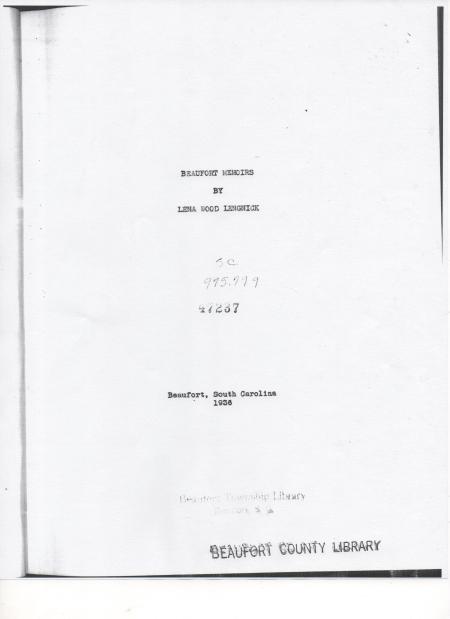
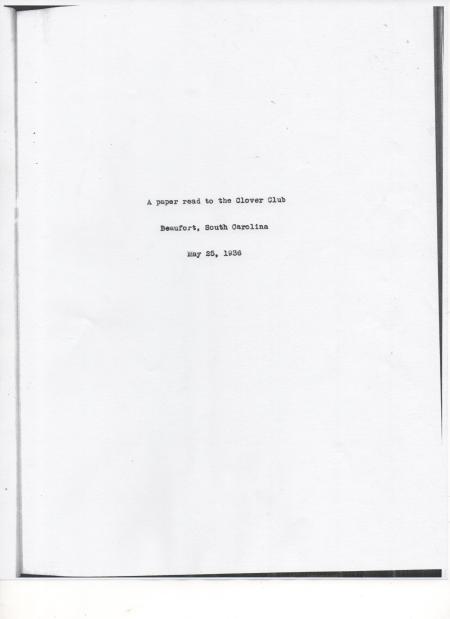
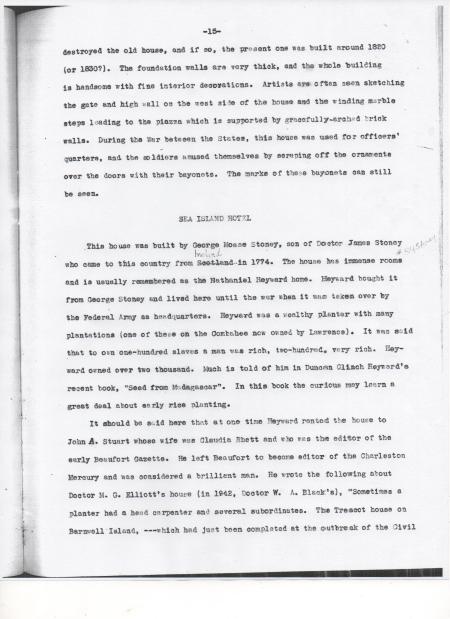
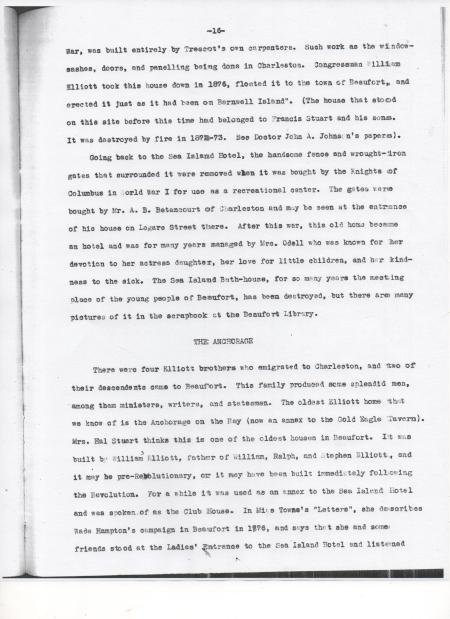
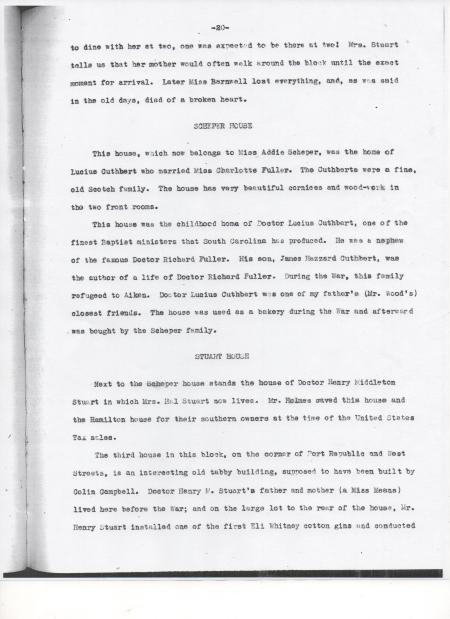
July 6, 2014 at 7:05 pm |
[…] Clover Club! Mrs. Lengnick’s paper, “Beaufort Memoirs”, was read to the Clover […]
LikeLike
January 11, 2015 at 11:33 pm |
[…] parts of a paper “Beaufort Memoirs” written by a woman named Lena Wood Lengnick, and published them here on the blog. Plus, it helps to have a search bar on the blog, since I use the blog for my scrapbook and […]
LikeLike